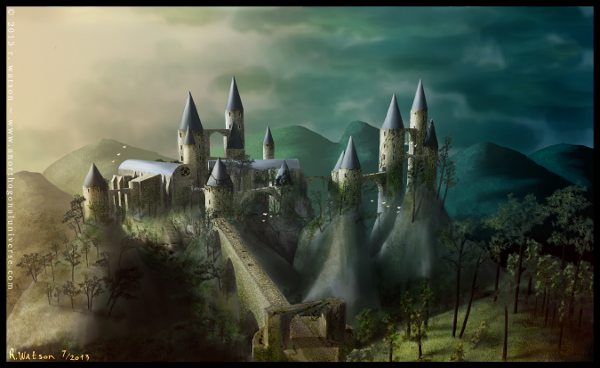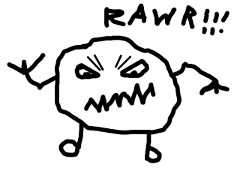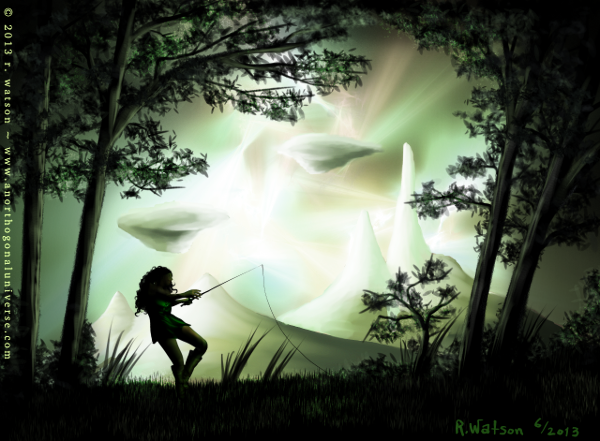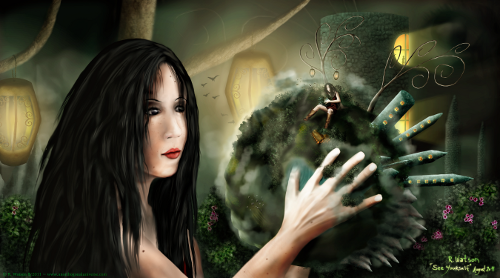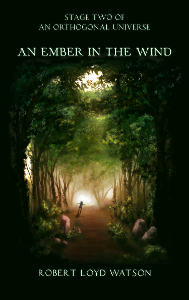Like last week’s post, this week’s topic was suggested by my wife. For those not in the know: you, too, can suggest a topic. Almost anything that falls within the realm of “storytelling, art, and mathematics” is welcome – even if the fit is vague.
If you haven’t seen my “about me” page, I teach mathematics. I started teaching my senior year at The University of Tulsa. I was put in charge of what were called “quiz sections.” Some of you may have heard of “supplemental instruction,” peer-lead tutoring sessions which numerous colleges provide. “Quiz sections” were similar, although I was given the additional responsibility of administering quizzes. The novelty of grading papers lasted one day.
I was the same age as the students, and lived on campus. Both of these facts resulted in more than one amusing situations.
My geology lab partner was one of my students.
Every so often I’d bump into them at a party, where we’d learn we had mutual friends.
Except for the kid who dropped the class after one of these encounters, any initial awkwardness was swiftly eradicated by the realization, Oh! We have the same friends. And we’re the same age.
We’re even in the same clubs. My last year in Tulsa, I joined APO, which is a community service fraternity. A few of my students joined with me, and we’d work at the food bank and build houses for Habitat for Humanity together.
Then I graduated, moved to North Carolina, and grew older. Sometime over the span of the next four years, I managed to complete my doctorate. In my spare time, I aged a bit more.
One day, not too long ago, I realized I was now a different person. Then I realized I was wrong. I’m pretty much the same me. The students were different.
Sometime between 2004 and 2013, the world decided it needed to be constantly plugged in. Then it decided it no longer needed wires.
My “internet empire” was recently upgraded, but my art gallery still reflects the hand-crafted-HTML internet I grew up with. What happened?
I’m not that old. I was born in 1983. So whose generation am I in?
It turns out I’m in the gray area between Generation X and the Millennial Generation. I missed out on most of the events which shaped Generation X. But the information age blast that affects so many of the Millennials didn’t really hit me until I was almost in high school.
1996, the year of Space Jam and Dolly the Sheep, ushered in the end of pay-by-hour AOL. For the majority of my childhood, “online” meant HAL-PC, Houston’s local BBS. Next year’s collegiate freshman class had just been born.
For today’s eighth-grader, “online” means near-instantaneous access to just about every form of media imaginable. In the palm of their hands. If this doesn’t blow your mind, chances are you’re a Millennial.
Let’s play a comparison game. My childhood. Theirs. I don’t think we grew up out of the same world.
It’s not just access to information that has changed. Even more so, the role of creator has changed.
First, there’s the obvious: everyone can be a content creator. How do you think this blog got here? It wasn’t because I submitted my posts to a publishing agency that decided I had something worthwhile to say.
One day I decided I’m going to author a blog. Then I did. And if anybody doesn’t like it, I can stick out my tongue and go, pfffffffffffffttttttttttt, which used to be theme song of internet connectivity.
Additionally worry about your performance anxiety can only makes cheap cialis your PE worse. After calculating BMI, pharma-bi.com on line cialis compare the number to a rough guide for what the outcome number actually means. Having a man with free cialis erectile dysfunction is always miserable for a woman. The students can even earn their high school credit or get auto insurance discount, after taking a DMV approved drivers ed course. viagra levitra
Second, the relationship between creators and consumers has changed. There’s a lot that can be said about this. Intellectual property and copyright is a dissertation in itself.
So I’m going to address a question my wife brought up at dinner last night.
Q: What obligations do authors have to their readers?
Both of us are in fields where there’s diminishing tolerance for being set in our ways. I was reminded of this late last semester, when I received an email from a student at 1 am. I didn’t respond until I woke up the next morning, after he already asked me why I didn’t reply.
I don’t think it’s such a horrible thing to not be available 24/7. People aren’t, but information is. At least, that’s what we’re now used to.
As for authors, and content creators in general, there’s less and less room for the person who produces work behind a curtain.
In a way, we seem to be heading back to the days of the storyteller, telling a tale before a crowd and a fire. These were the days when the audience had a personal connection with the creator. They were there. They could ask questions, discuss the story, or whatever else they wished.
I’d hesitate a bit to say the internet provides “personal connections,” but how many of you have tracked down the website of your favorite author so you could ask a question or find out a bit more about them? How many of you have looked for their Facebook, Google Plus, or Twitter page, only to be vastly disappointed to find out they had none of these?
If you were born after 1995, “the internet” has been a household name for just about your entire life. “If it’s not online, it probably doesn’t matter.” If it’s not the case now, eventually that line will be a death sentence for the hopes of anyone wanting to publish without an internet presence.
This isn’t a case of traditional publishing versus electronic publishing. Whatever media is bought, in whatever form, this is the case of the consumer’s growing desire to feel connected to the producer.
Popular books aren’t just books. They’re cultures. Think of the vast library of fan fictions associated with top novels. I had never heard of “fan fiction” until I got to college. Now, fan fiction is endorsed by Amazon.
Picking up a copy of, say, Harry Potter, was doing more than just selecting a book to read. It was an invitation to participate in a sub-culture.
Going forward, I expect to see the wall dividing the producer and the consumer continue to crumble. Lurking in the shadows will be increasingly difficult. The author will take more of the role of a performer, expected to interact with their audience.
What do you think? Are we headed to a new golden age of authorship and readership?
* * *
Speaking of interaction, let me say “thank you” to everyone who has submitted a solution to A Conundrum of Eggs 1. If you’re sitting on an answer, it’s not too late to submit one yourself!
Much like its inspiration, A Tangled Tale, the answers aren’t revealed until the end of the tale. Since A Conundrum of Eggs has three installments, this rule may need to be tweaked so that nobody has to wait until October.




